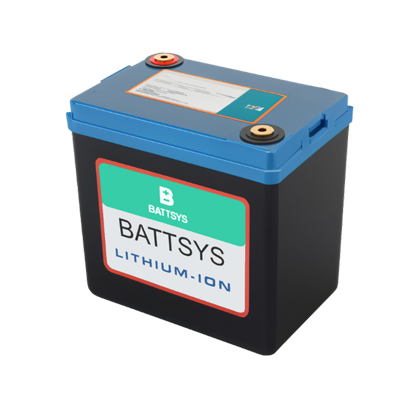As one of the earliest and most widely used types of batteries, lead-acid batteries have the advantages of low cost, simple maintenance, high reliability, and the ability to discharge large currents. Therefore, they have been widely used in the field of electric bicycles. However, with the continuous development of technology and the increasing demand for environmental protection and safety, lead-acid batteries have gradually shown some shortcomings. Lead acid batteries, due to their large size, low energy density, limited energy storage, frequent replacement, inability to meet long-distance cycling needs, and short service life, are superior to lead-acid batteries in terms of portability, endurance, and energy density. Therefore, lead-acid batteries are gradually being replaced by high cost-effective lithium batteries.
The main reason for choosing lead to lithium batteries is that
lithium batteries have many advantages compared to traditional lead-acid batteries.
1. Weight and volume: Lithium batteries are usually lighter and smaller in size than lead-acid batteries. At the same battery level, the weight of lithium batteries is usually only half or even less than that of lead-acid batteries, which gives lithium batteries a significant advantage in areas that require lightweight design;

2. The energy density of lithium batteries is higher than that of lead-acid batteries, which means that lithium batteries of the same volume can store more energy and provide longer battery life for devices;
3. Service life: Lithium batteries have strong durability, slow consumption, can be charged and discharged more than 500 times, and have no memory. The general service life is 4-5 years. Lead acid batteries generally have a deep charge and discharge time of up to 400 times, have memory, and a lifespan of about two years;
4. Charging and discharging performance: Lithium batteries can achieve fast charging speed, improve equipment availability and efficiency, while lead-acid batteries have a slower charging speed and require longer time to fully charge;
5. Working temperature range: Lithium batteries have a wider working temperature range compared to
lead-acid batteries, and can be used in high and low temperature environments at different temperatures. Lithium batteries can operate at -25~55 ℃, reaching 70% of their capacity, while lead-acid batteries can only operate at 10~40 ℃ and cannot operate at -25 ℃;
6. Self discharge rate: Lithium batteries have a lower self discharge rate than lead-acid batteries, while lithium batteries have a lower self discharge rate, which can store electrical energy for a longer period of time and ensure that the equipment can be used immediately when needed. Acid batteries will experience significant energy loss when not in use for a long time and require recharging before use.
In summary, the main reason for choosing lead to lithium batteries is that lithium batteries have many advantages such as higher energy density, longer service life, lighter weight, faster charging speed, and lower self discharge rate, which can meet the performance requirements of modern devices and bring better user experience and effects.
